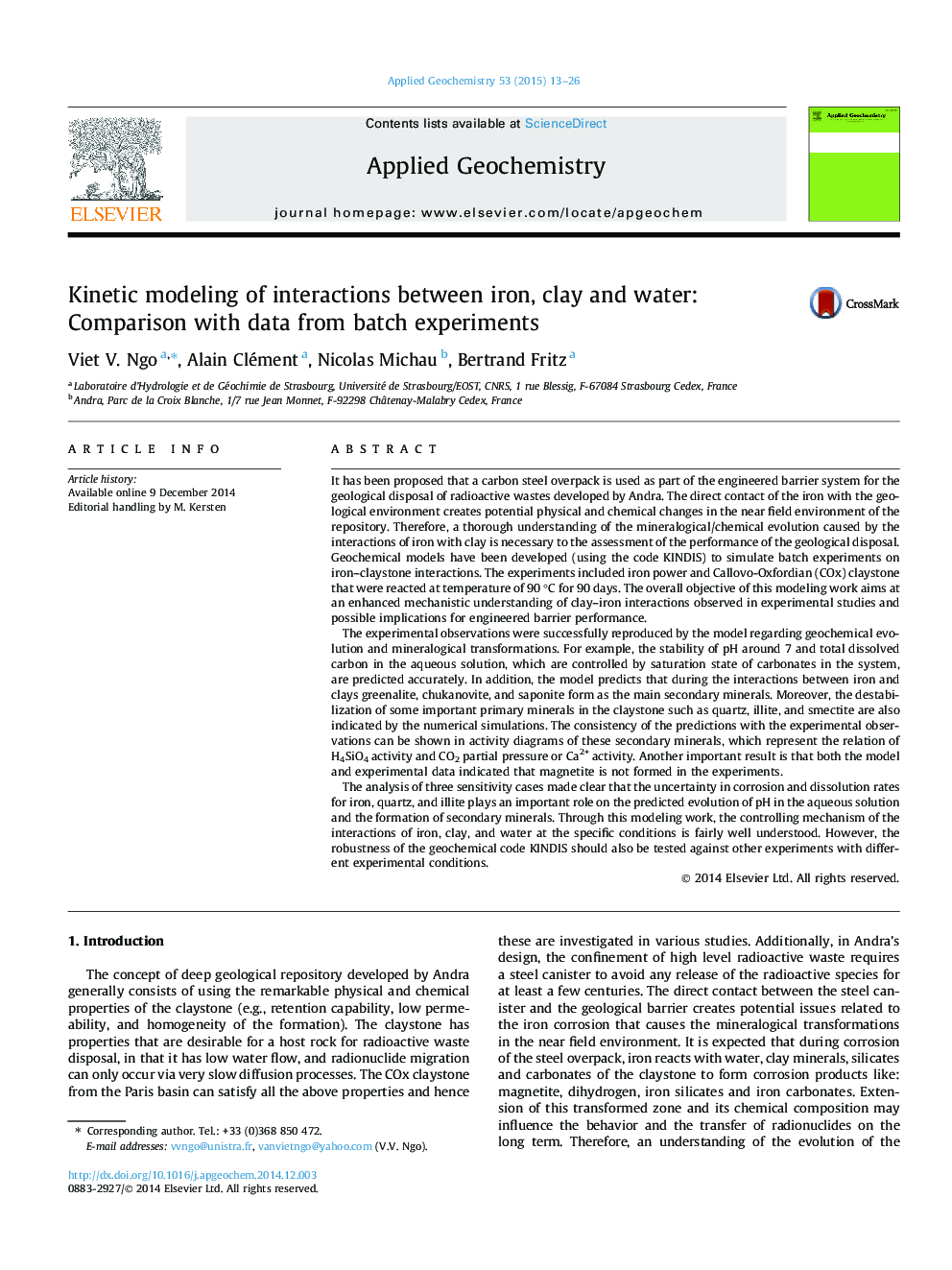| کد مقاله | کد نشریه | سال انتشار | مقاله انگلیسی | نسخه تمام متن |
|---|---|---|---|---|
| 4435690 | 1620238 | 2015 | 14 صفحه PDF | دانلود رایگان |
• Modeling the batch experiments investigating the interactions between iron, clay and water at 90 °C.
• The reaction pathways are accurately reproduced by the geochemical code KINDIS:
• (1) The formation of Fe-rich silicates and the absence of magnetite.
• (2) The pH in the system is stabilized around 7 by the dominant mineral, i.e. calcite.
• Corrosion rate and kinetic data associated with quartz and illite play an important role.
It has been proposed that a carbon steel overpack is used as part of the engineered barrier system for the geological disposal of radioactive wastes developed by Andra. The direct contact of the iron with the geological environment creates potential physical and chemical changes in the near field environment of the repository. Therefore, a thorough understanding of the mineralogical/chemical evolution caused by the interactions of iron with clay is necessary to the assessment of the performance of the geological disposal. Geochemical models have been developed (using the code KINDIS) to simulate batch experiments on iron–claystone interactions. The experiments included iron power and Callovo-Oxfordian (COx) claystone that were reacted at temperature of 90 °C for 90 days. The overall objective of this modeling work aims at an enhanced mechanistic understanding of clay–iron interactions observed in experimental studies and possible implications for engineered barrier performance.The experimental observations were successfully reproduced by the model regarding geochemical evolution and mineralogical transformations. For example, the stability of pH around 7 and total dissolved carbon in the aqueous solution, which are controlled by saturation state of carbonates in the system, are predicted accurately. In addition, the model predicts that during the interactions between iron and clays greenalite, chukanovite, and saponite form as the main secondary minerals. Moreover, the destabilization of some important primary minerals in the claystone such as quartz, illite, and smectite are also indicated by the numerical simulations. The consistency of the predictions with the experimental observations can be shown in activity diagrams of these secondary minerals, which represent the relation of H4SiO4 activity and CO2 partial pressure or Ca2+ activity. Another important result is that both the model and experimental data indicated that magnetite is not formed in the experiments.The analysis of three sensitivity cases made clear that the uncertainty in corrosion and dissolution rates for iron, quartz, and illite plays an important role on the predicted evolution of pH in the aqueous solution and the formation of secondary minerals. Through this modeling work, the controlling mechanism of the interactions of iron, clay, and water at the specific conditions is fairly well understood. However, the robustness of the geochemical code KINDIS should also be tested against other experiments with different experimental conditions.
Journal: Applied Geochemistry - Volume 53, February 2015, Pages 13–26
